While seemingly at odds, art and science are often inextricably intertwined. And perhaps no place is this more evident than in the instruments that capture the beauty of time. I am hardly alone in my fascination with timepieces, those form meet function wonders that combine artistic expertise, engineering and amazing craftsmanship. In a new volume, published in partnership with the prestigious Fondation Internationale de la Haute Horlogerie, collectors, lovers of history and decorative art enthusiasts will find elucidating text along with almost two hundred stunning timepieces throughout the ages that capture the beauty of time.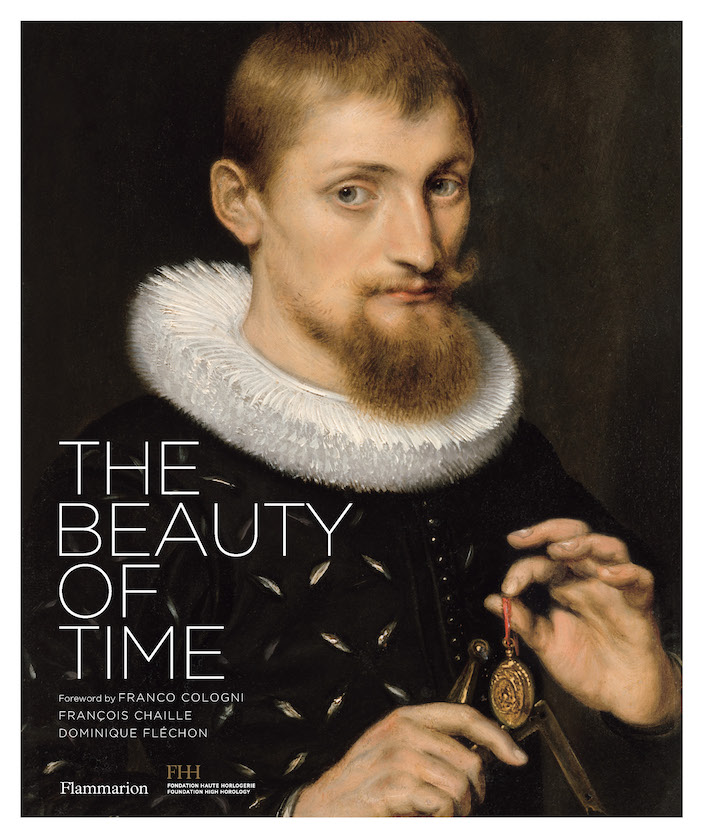 The first mechanical clocks were found in cathedrals, serving the practical function of announcing the time for mass etc but also decorated as Gothic period works of art. Even as early as the 14th century, clocks, such as the astronomical clock in Exeter Cathedral, below, was melding art and science to great effect.
The first mechanical clocks were found in cathedrals, serving the practical function of announcing the time for mass etc but also decorated as Gothic period works of art. Even as early as the 14th century, clocks, such as the astronomical clock in Exeter Cathedral, below, was melding art and science to great effect.
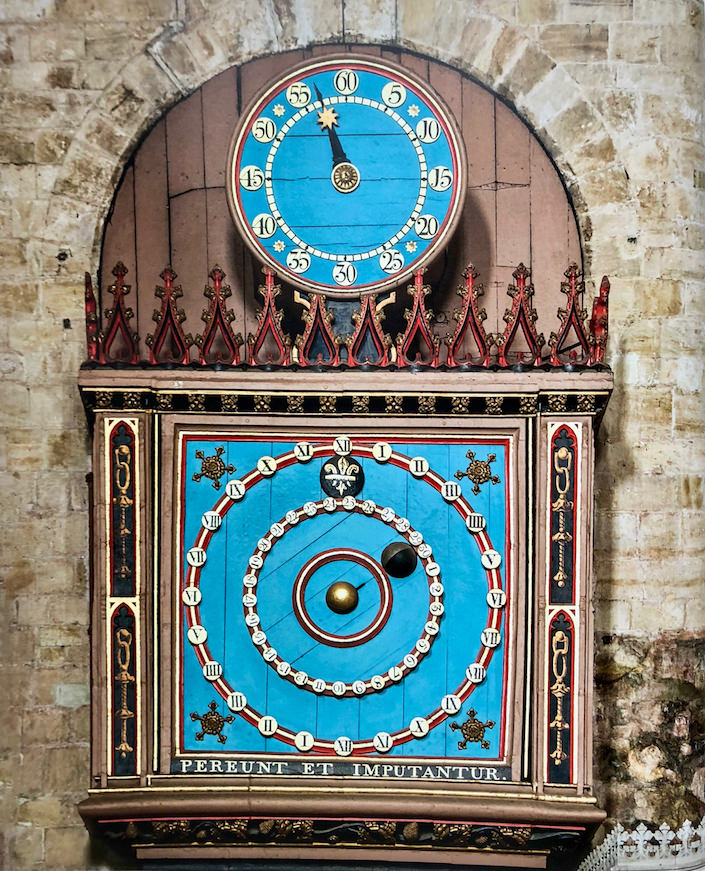 Early clockmakers were especially interested in the celestial bodies and astronomical timekeepers became symbols of modernity and economic power. The Duke of Milan, for example, commissioned the intricate planetary clock below (a reconstruction of the original) for his castle in Pavia. Made sometime between 1348 and 1364, it stood over three feet tall and was a famous work that all the European princes came to see.
Early clockmakers were especially interested in the celestial bodies and astronomical timekeepers became symbols of modernity and economic power. The Duke of Milan, for example, commissioned the intricate planetary clock below (a reconstruction of the original) for his castle in Pavia. Made sometime between 1348 and 1364, it stood over three feet tall and was a famous work that all the European princes came to see.
 © Musée international d’horlogerie, La Chaux-de-Fonds from The Beauty of Time, Flammarion 2018
© Musée international d’horlogerie, La Chaux-de-Fonds from The Beauty of Time, Flammarion 2018
As the Middle Ages waned, clocks appeared in more civil locations, like the amazing astronomical clock in the Prague city hall, below, that walked the line between religious practices and more humanist approaches.
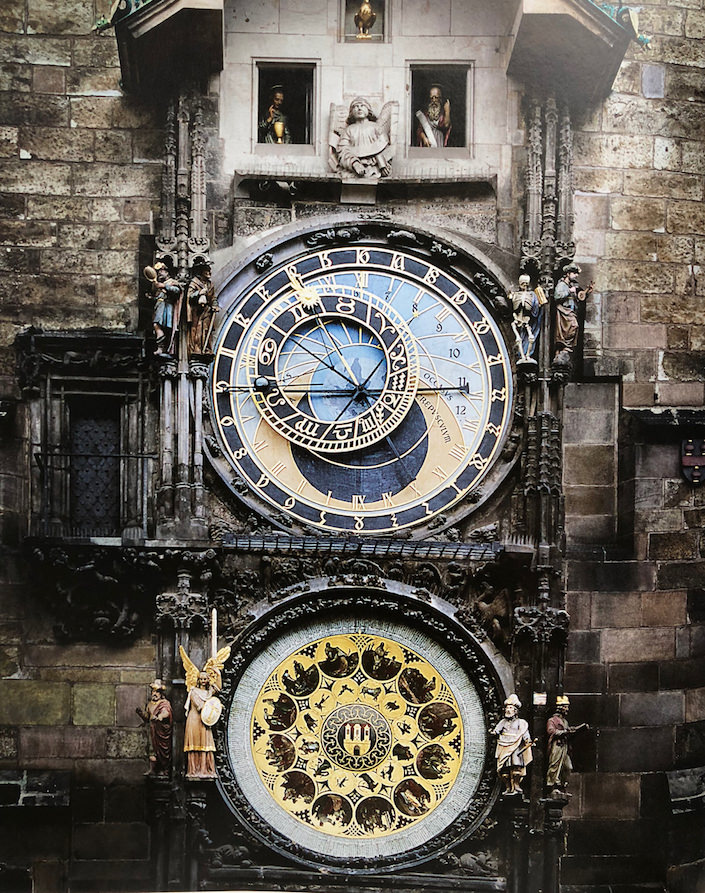 And with the dawn of the Renaissance, the arts exploded with patronage from the powerful, including Emperor Rudolf II of Hapsburg whose Kuntskammer in his Prague castle was the stuff of legends. He not only collected past masters but had a fascination with astrology, alchemy and instruments of time. He commissioned many decorative objects, including, in 1586, an extraordinary galleon shaped automaton clock in gilt brass, below. Measuring over 3 ft tall, a mechanism triggers a multi-step series of movements culminating in sailors hoisting the sails, the rudder flapping to the sound of a drum, the ship moving forward on its wheels and a dozen cannons firing!
And with the dawn of the Renaissance, the arts exploded with patronage from the powerful, including Emperor Rudolf II of Hapsburg whose Kuntskammer in his Prague castle was the stuff of legends. He not only collected past masters but had a fascination with astrology, alchemy and instruments of time. He commissioned many decorative objects, including, in 1586, an extraordinary galleon shaped automaton clock in gilt brass, below. Measuring over 3 ft tall, a mechanism triggers a multi-step series of movements culminating in sailors hoisting the sails, the rudder flapping to the sound of a drum, the ship moving forward on its wheels and a dozen cannons firing!
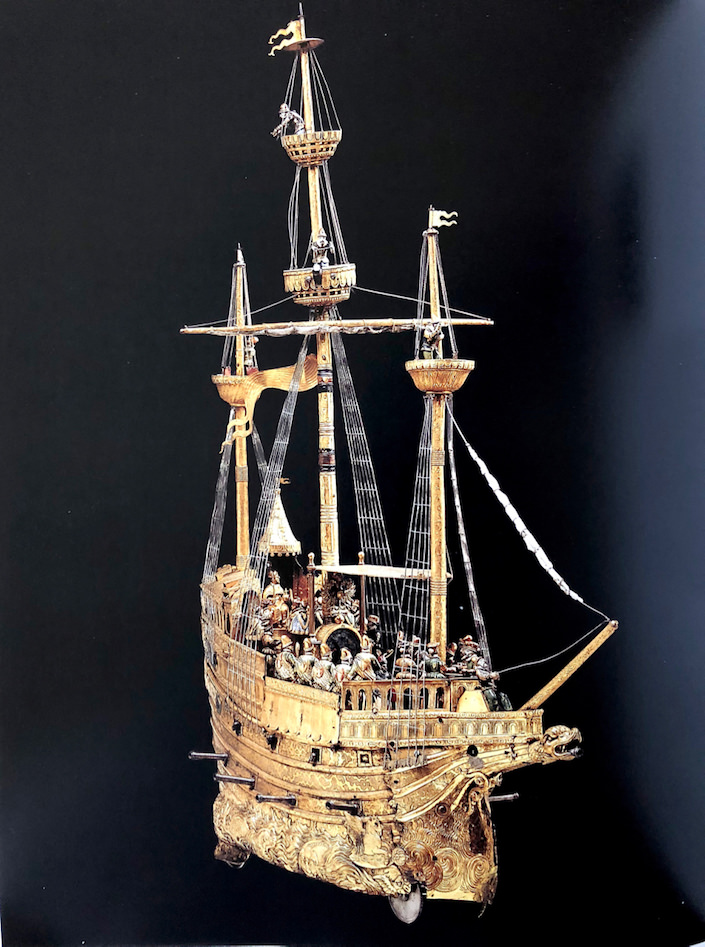 The 18th c. Enlightenment saw a passion for the sciences and French clockmaking was unsurpassed. The king set the stage at Versailles with his interest in complicated and beautiful timepieces that inspired sophisticated technical masterpieces such as this amazing automata clock featuring multiple calendars, the age and phases of the moon, time of sunrise and sunset equation of time, world time and signs of the zodiac!!
The 18th c. Enlightenment saw a passion for the sciences and French clockmaking was unsurpassed. The king set the stage at Versailles with his interest in complicated and beautiful timepieces that inspired sophisticated technical masterpieces such as this amazing automata clock featuring multiple calendars, the age and phases of the moon, time of sunrise and sunset equation of time, world time and signs of the zodiac!!
 © 2017 Richard Redding Antiques Ltd in The Beauty of Time
© 2017 Richard Redding Antiques Ltd in The Beauty of Time
Automatons are fascinating works of art, often with time components. Many are featured in the book and if you’d like to see more, you can visit an exhibit I wrote about here and here. Galerie J. Kugel had a fantastic automaton at TEFAF NYC Fall 2017 that I believe designer Brian McCarthy bought for a lucky client. They had an exhibit at their Paris gallery in 2016 that you can read about here and see the automatons in action. But I digress.
 © Dominique Cohas – Beyer Zurich Clock and Watch Museum from The Beauty of Time, Flammarion 2018
© Dominique Cohas – Beyer Zurich Clock and Watch Museum from The Beauty of Time, Flammarion 2018
The 18th century witnessed the rise of the watch as an important decorative accessory but it was the 19th century that really saw the emergence of many styles that would endure. The famous clockmaker Breguet had invented the automatic watch and made popular a new elegant and understated style. His pocket watch above, from 1815, with its extra thin case, guilloché dials and “apple” style hands, above, is as timelessly elegant today as it was 200 years ago.
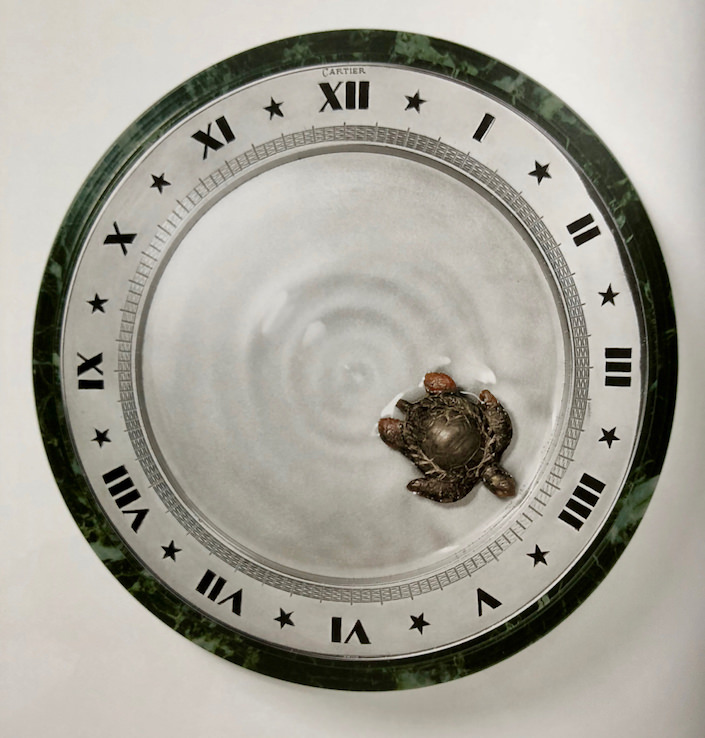 This is a topic of endless intrigue and inspiration but as we skip forward to the 20th century, many prestigious names emerge as designers of innovative and beautiful timepieces. Cartier is of course one of the most recognizable. Did you know that the Santos watch dates back to 1916? They were also famous for their mystery clocks. Above their magnetic table clock with a center silver dish meant to be filled with water. The movement drives a magnet beneath the dial, which then moves the floating turtle to point to the hour on the rim. To read more about Cartier mystery clocks, you can go here, from my visit to the Cartier exhibit at the Grand Palais four years ago.
This is a topic of endless intrigue and inspiration but as we skip forward to the 20th century, many prestigious names emerge as designers of innovative and beautiful timepieces. Cartier is of course one of the most recognizable. Did you know that the Santos watch dates back to 1916? They were also famous for their mystery clocks. Above their magnetic table clock with a center silver dish meant to be filled with water. The movement drives a magnet beneath the dial, which then moves the floating turtle to point to the hour on the rim. To read more about Cartier mystery clocks, you can go here, from my visit to the Cartier exhibit at the Grand Palais four years ago.
 © Van Cleef & Arpels from The Beauty of Time, Flammarion 2018
© Van Cleef & Arpels from The Beauty of Time, Flammarion 2018
Wallis Simpson’s passion for jewelry knew no bounds. She was not only a huge Cartier customer, but also commissioned many spectacular special orders from Van Cleef & Arpels, including the amazing Cadenas Watch above. Evidently in the early 20th century, it was considered gauche for a woman to look at time in public or to even wear a watch. So the Cadenas Watch, with the appearance of a bracelet, is designed so only the wearer could see the dial.
 © Patrimoine Jaeger-LeCoultre from The Beauty of Time, Flammarion 2018
© Patrimoine Jaeger-LeCoultre from The Beauty of Time, Flammarion 2018
Another iconic 20th century watch design is Jaeger Le Coultre’s Reverso. With its classic Art Deco styling, it was designed for the polo playing British Army officers in India with a case back that would protect the face and crystal from any potential impact. These are just a few of the marvels of technology and artistic achievement featured in this amazing journey throughout the centuries showing our fascination with capturing and expressing the beauty of time.


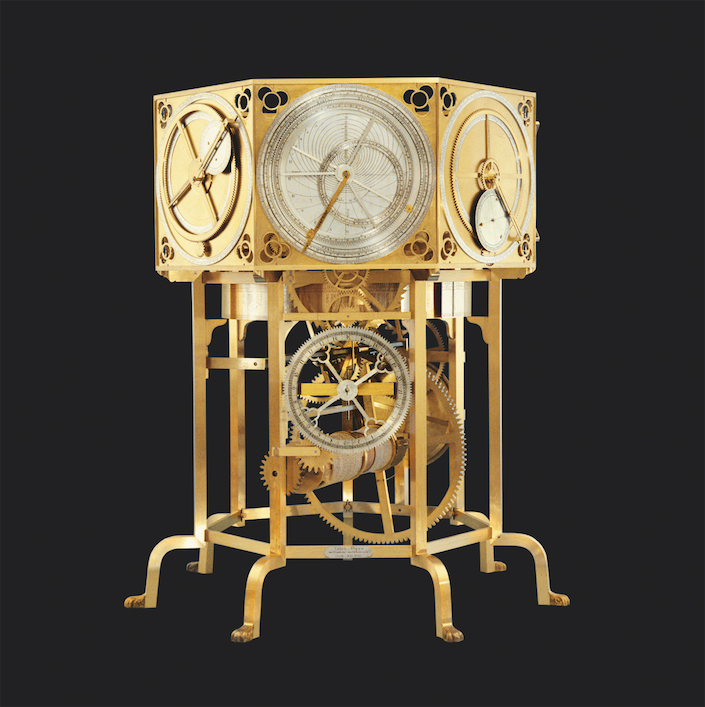
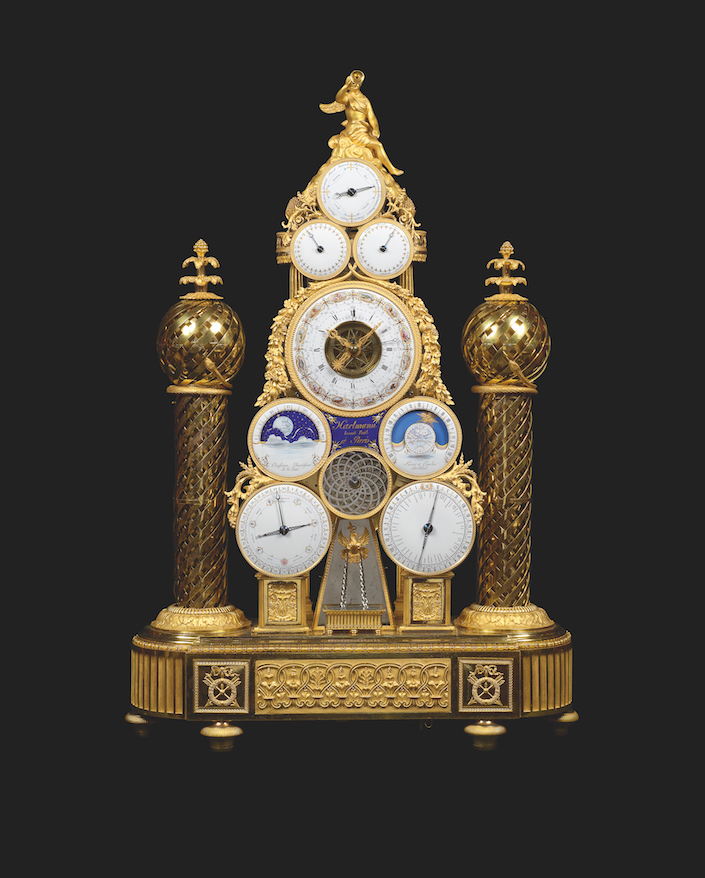 © 2017 Richard Redding Antiques Ltd in The Beauty of Time
© 2017 Richard Redding Antiques Ltd in The Beauty of Time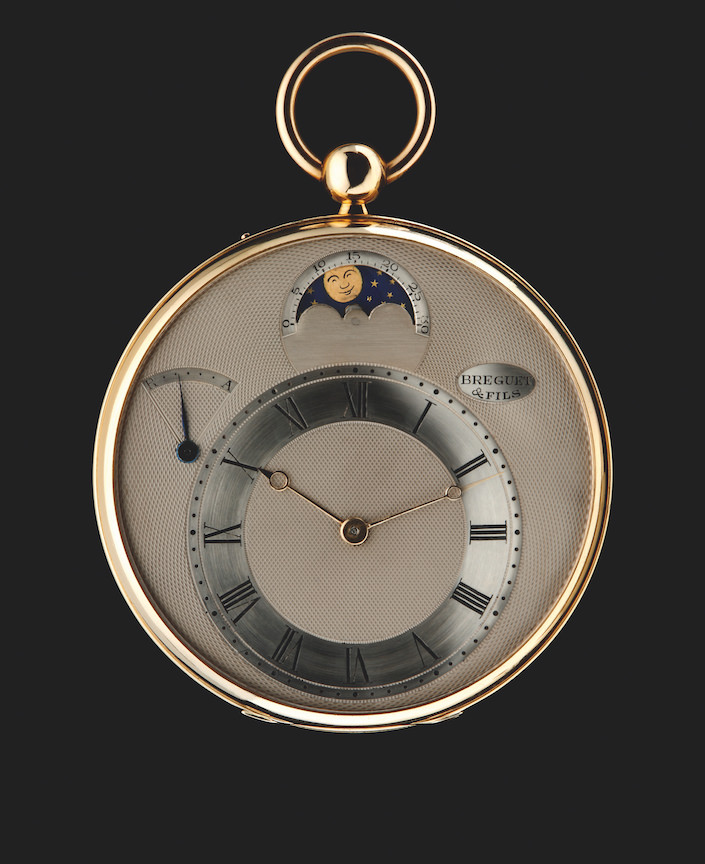
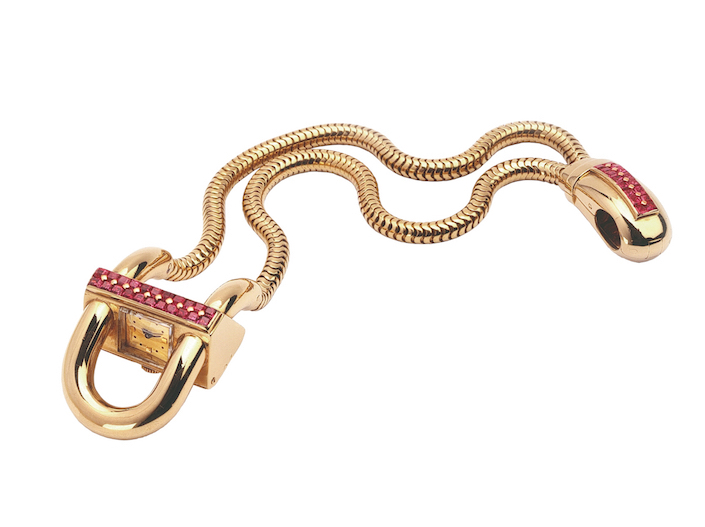 © Van Cleef & Arpels from The Beauty of Time, Flammarion 2018
© Van Cleef & Arpels from The Beauty of Time, Flammarion 2018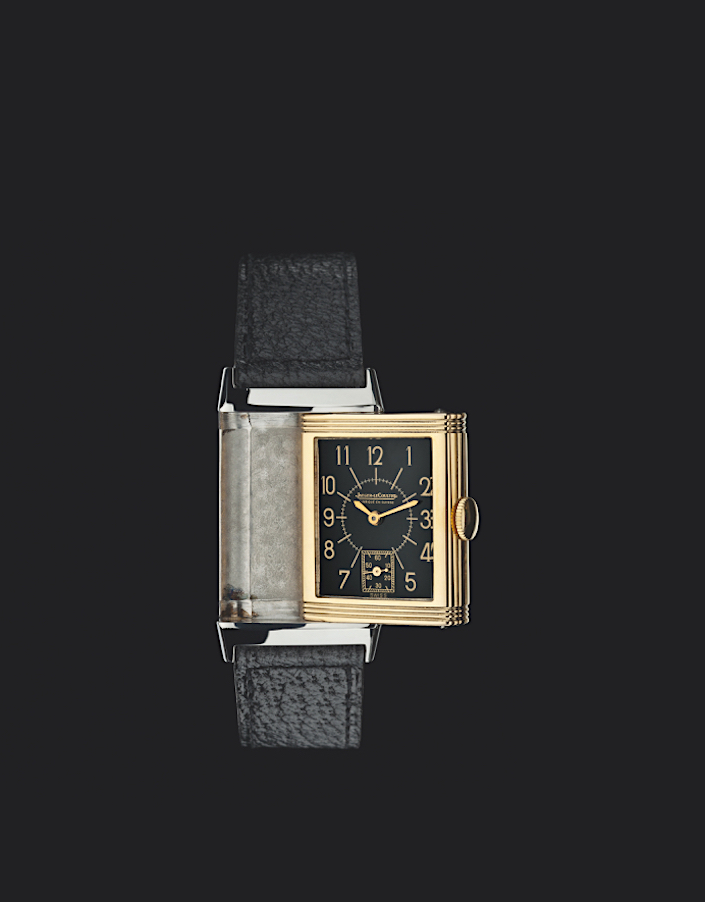 © Patrimoine Jaeger-LeCoultre
© Patrimoine Jaeger-LeCoultre 
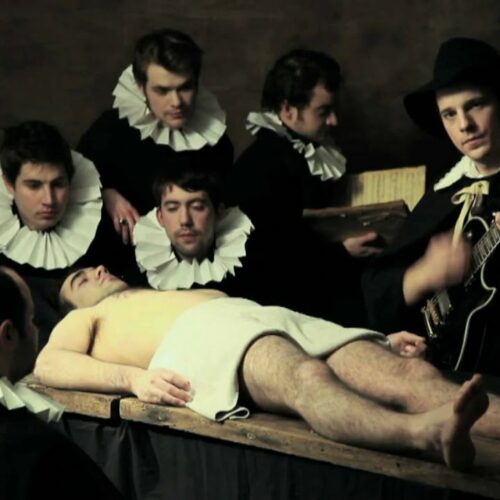
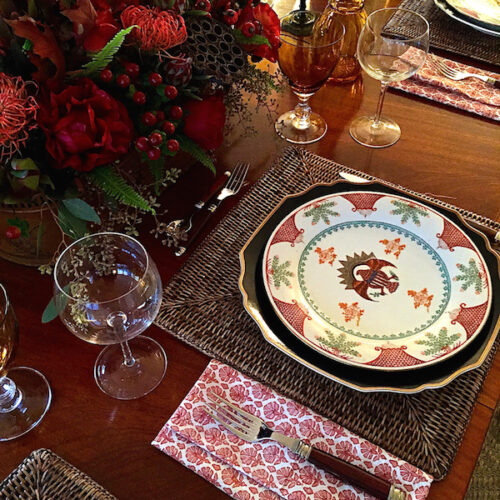
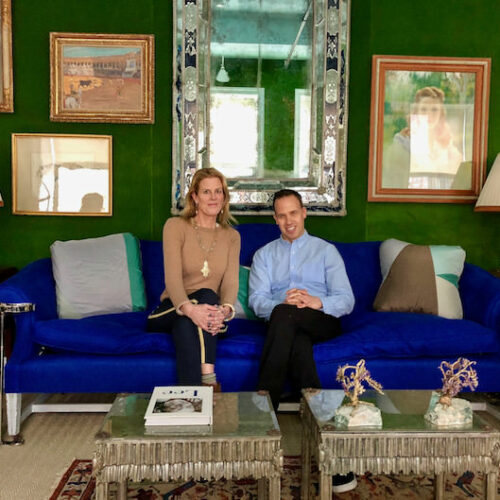

If you’re fascinated by beautuful antique clocks and you’re in New England, I highly recommend a visit to Delaney Antique Clocks in West Townsend, MA. The brothers who own it are highly knowledgeable and enjoy sharing the history behind each magnificent timepiece. http://delaneyantiqueclocks.com
We all need more TIME !!
Master”time”pieces!! franki
Beautiful post, so informative!!